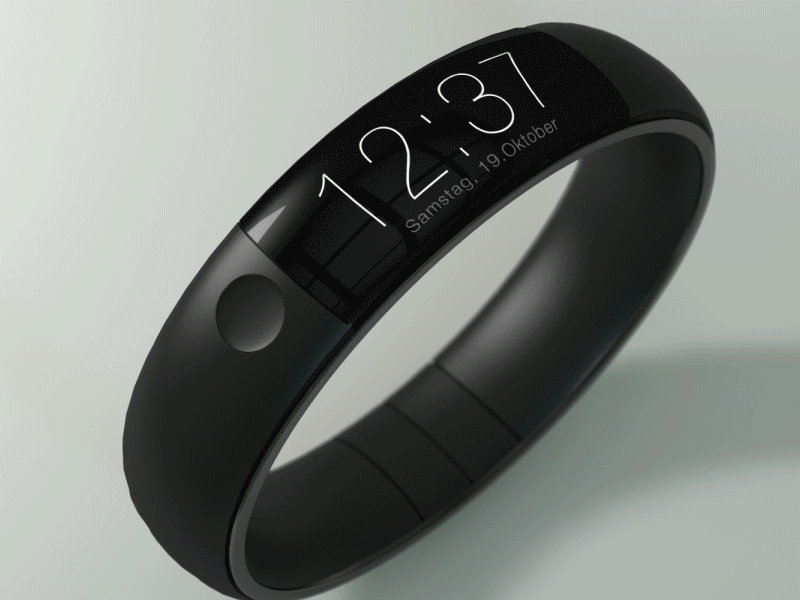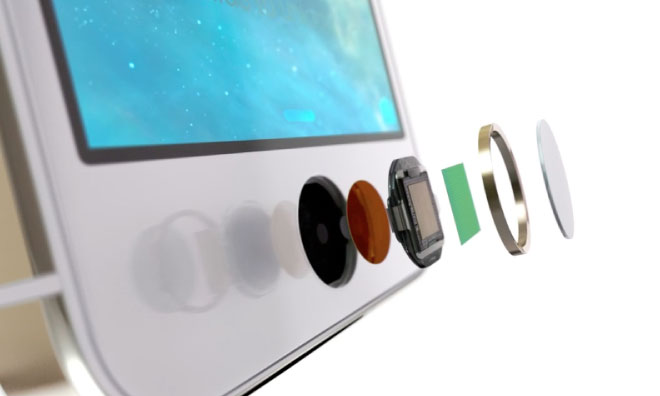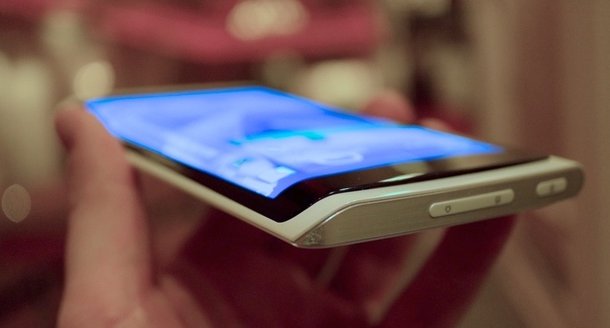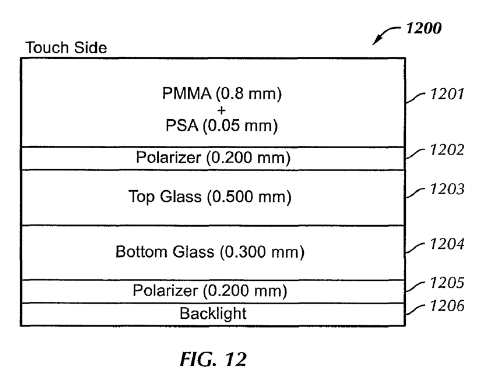
Thomas Bogner’s concept of an Apple watch uses a curved crystal surface, curved in 2 axes. source: dribbble.com
Is Apple planning to use sapphire crystal for the iWatch? What about other devices such as the iPhone (that already uses some sapphire crystal parts)? We know Apple is working on a watch, but no one is quite clear on what it will look or be like. We wrote about the iWatch almost a year ago predicting its release before there was even confirmed news about it. We’ve also seen iPod nanos dressed up as a watch, and we’ve seen quotes from Apple board member Bill Campbell saying “when you start to think about glasses or watches, they become as intimate as the cellphone was.”
We also hear Apple is experimenting with curved glass in reports from the New York Times and Bloomberg, chances are that they will be using sapphire crystals (screens) just like high-end timepieces do. The goal of course are durable, beautiful iWatches that don’t break as easily as a dropped iPhone will. We even discussed how the iPhone 5 took cues from luxury watches here.
Apple faces two difficult design problems. First, Apple typically imagines one industrial design for men and women alike. Secondly, Apple needs to make sure that the product can endure the punishment of daily use. It’s not clear what Apple will do to solve the design needs of men and women with very differently sized wrists, as well as watch size preferences and people’s affinity for different colored materials. Though, the watch will likely be large (think Samsung Galaxy Gear) because of the battery.
The issue of screen durability is nothing new to Apple. Corning’s Gorilla Glass was a product invented almost five decades ago and Apple arranged with Corning to revive it. Apple landed on this tough glass instead of using plastic at the time.Though, Gorilla Glass is not sapphire crystal and is closer to mineral glass with a hard coating. Think Invicta’s “Flame Fusion” marketing term.
Separately, sapphire has been a part of horology for years, appearing as crystals and transparent case backs on fine watches that are water resistant to impressive depths. Apple began using sapphire with the introduction of the iPhone 5S for the TouchID home button where scratches would interfere with the fingerprint reader’s functionality. Sapphire crystal also makes an appearance over the camera on the iPhone 5S.
Now Apple’s bought a company in Arizona that makes synthetic sapphire. Apple is very cost-sensitive when it comes to the prices they pay for parts. GT Advanced Technologies, the newly-purchased company, has a method for slicing sapphire with an ion particle accelerator. Not coincidentally, Apple also has a patent on a method for laminating glass over glass to get a screen totaling about 1mm thick. This technique, combined with the reputed order to increase production by about 20 times tells us that synthetic sapphire crystal is becoming strategic to Apple’s product line.
How is sapphire different than what’s currently in use? It’s a fact that people scratch and break smartphone screens, including iPhone screens using Corning’s Gorilla Glass. Importantly, Gorilla Glass is a 622 to 701 on the Vickers hardness test. Sapphire is as much as 2,300 and should resist scratches and breaking. The issue with Gorilla Glass is that while it sounds great, in real world use, and given the thickness Apple allows, it just doesn’t do that good of a job.
Apple spends an anecdotally large amount of time with people in stores replacing broken screens or replacing devices with broken screens. So it would actually benefit them to invest in a more expensive material that may in the end remove the need to perform a lot of product replacements. It is important to note that traditionally, sapphire crystal is very expensive to both produce and machine. Cutting it is very difficult, and producing screens that are perfectly clear and uniform is complicated.
When it comes to wristwatches, consumers have an expectation that a watch is going to be able to hold up to daily life – whether that means water resistance, durability to shock, and scratch resistance. Smartwatches will need to survive where smartphones never needed to. Though it is likely that they will be dropped with less frequency.
Apple has a history built up over the last fifteen years of selling an experience where everything the consumer interacts with, from the initial purchase to support, is meant to be meticulously executed. If they sell a wristwatch that isn’t water resistant, isn’t scratch or drop resistantant and have consumers entering the stores asking for managers to make exceptions to warranty policy over broken screens or moisture submersion, it’s not going to go over well at all. Sapphire could play a big part in avoiding these concerns entirely, and if Apple does it, then it means other smartwatch makers will likely follow.
A curved touchscreen wristwatch from Apple, taking advantage of iOS 7’s new capability to push all notifications in Notification Center to Bluetooth Low Energy devices is interesting – but even more interesting is the possibility that we’ll see a curved touchscreen Apple wristwatch that learns from the best materials-science that classic horology has been using for years. We at aBlogtoWatch anticipate that in the next few years, mobile phones and smartwatch makers will take advantage of synthetic sapphire crystal for use in many devices. This also assumes a new focus on sapphire crystal manufacturing and machining technology that should lower costs and increase the breadth of use.



